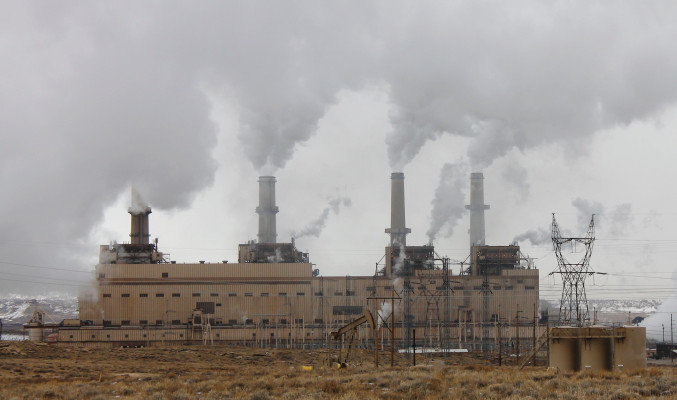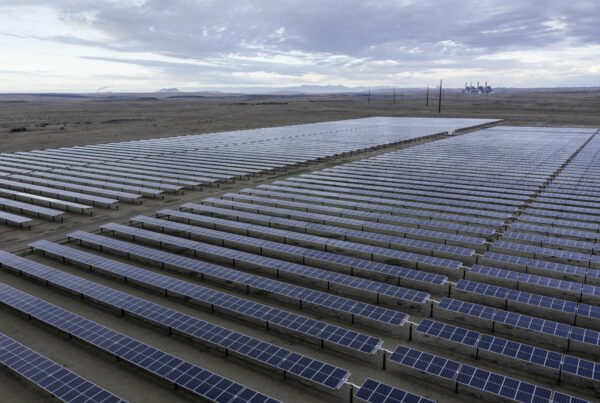The San Juan Generating Station and San Juan Mine coal complex (SJGS/SJM) is New Mexico’s single largest polluter. While the facilities provide electricity to 500,000 customers, and employ several hundred of our community members, they do so at a great cost to the health of surrounding communities.
Over the last year, the fate of the complex has taken a 180 degree turn from a vision of extending operation for decades to impending closure as soon as 2022. This shift could devastate communities in northwest New Mexico, but it doesn’t have to.
How did we get here?
The coal industry is struggling. Recent major coal company bankruptcies were the first major warning sign, but the decline reached the Four Corners this year.
In February, owners of the Navajo Generating Station in northern Arizona announced a 2019 closure date, stating that coal is no longer profitable. In March, the primary owner of SJGS, the Public Service Company of New Mexico (PNM), proposed closure of the power plant in 2022, replacing it with wind, solar, and natural gas.
The reality is that other energy options, including renewables, are cheaper. Right now, solar and wind power are about half the price of coal.
What would closure mean?
If PNM, which currently owns 66% of SJGS, pulls out the plant is unlikely to remain open. SJM currently sells all of its coal to SJGS, so closure of the power plant will likely spell the same future for the mine.
Closure of this coal complex could leave our community in northwest New Mexico reeling. We’re already suffering from the loss of oil and gas jobs. Lost coal royalties and jobs, as well as expensive reclamation, could have a heavy impact on our already fragile economy if we don’t do something quickly.
What can be done?
Luckily, two processes are underway right now that provide opportunities to reevaluate our energy future. The first is a planning process by the power plant’s primary owner, PNM, and the second is an environment analysis for the mine by the federal government.
PNM’s Integrated Resource Plan
In July 2017 the utility company, Public Service Company of New Mexico, released their new Integrated Resource Plan (IRP), which determines their power sourcing plans for the next four years. In this IRP, PNM confirmed their plans to withdraw from all coal assets, including SJGS in 2022, replacing the power with wind, solar, and natural gas. PNM cited lower costs and a cleaner environment as reasons for this decision.
PNM’s IRP exemplifies a huge shift from their plans just a year ago to keep SJGS open until 2053. The abruptness of the announcement has left local communities scrambling. PNM could walk away from the pollution they’ve caused and the economic turmoil that follows in their wake, or they could be at the forefront of a just transition.
Instead of pulling out of the community that has supported them for decades, PNM could build their new renewable energy facilities in northwest New Mexico, utilize their existing transmission lines, and retrain their workers for the new jobs.
San Juan Mine Environmental Impact Statement
Completely unrelated to PNM’s IRP, the federal government is currently analyzing future options for the San Juan Mine through an Environmental Impact State (EIS).
The Office of Surface Mining (OSM), which is conducting the analysis, neglected to complete a sufficient EIS when the San Juan Mine moved underground several years ago. Subsequent legal proceedings resulted in OSM agreeing to redo the analysis by 2019. Instead of producing another inadequate EIS that tries to justify extending the life of the mine, OSM could use this opportunity to face the fact that there is no future for coal. They could plan for a just transition.
OSM could lead a transition away from coal at SJM by creating a necessary framework that ensures worker protections, worker re-training, and meaningful environmental clean up. They could consider options for future uses of polluted area, including solar installation.
What can we do?
Both of these processes have the potential to not only protect, but enhance the communities of northwest New Mexico. We hope that PNM and OSM see this opportunity to become leaders in energy transition in the west, but public voices are a necessity to influence them. Both of these processes have periodic public comment opportunities and if you sign up for SJCA alerts we’ll let you know when to comment and what you can say.
In addition, we need to watchdog OSM. Too often federal agencies get away with lackluster environmental analyses with predetermined outcomes. We’re keeping a close eye on OSM during this process and even grading them on their actions. Check out our EIS Scorecard here.
The bottom line is that a just, orderly transition away from this coal complex is possible. The economy ready for the shift and there are two processes in place that can actually facilitate it. What we need now is the will and determination to make it happen. As a public, we must prove to our federal agencies and utility companies that we won’t settle for anything less.


